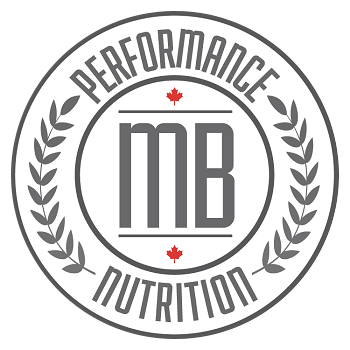Last updated on January 11th, 2024
Do Your Nutrition Needs Change Over 40?
These days it’s not uncommon to hear someone say “40 is the new 30” and so on for every subsequent decade. Age categories don’t mean what they used to in the 20th century. Advances in medicine and better living conditions have made it harder to figure out how old someone is at first glance.
Now, more than ever, I see people in their 50s, 60s and beyond retain a high level of fitness and remain competitive. An active 60-year-old may have a higher level of fitness than a sedentary 40-year-old, including better measures of VO2 max, and more muscle strength and endurance.
Still, there are unique aspects to each decade. If you bear these in mind, you can make the necessary adjustments and ace the aging process like many elite masters athletes have done. Let’s take a look at the issues that may crop up in each decade before exploring ways to solve them.
The 40s
If you’re active and you make the effort to focus on your wellbeing, the 40s can feel awesome overall. But you’ll probably start noticing some changes. For example, recovery takes longer than it used to. You’ll probably also experience the following:
- Little aching niggles occur more frequently.
- Foods that you used to be able to enjoy don’t seem to agree with your body anymore.
- Hormonal changes mean lower sex and thyroid hormones.
- Your metabolism slows down.
- You might find that body fat settles in different places and it’s more difficult to shed pounds when you want to.
- You lose muscle and struggle to make gains.
- Your VO2 max decreases.
For most athletes, peak performance starts to decline gradually at about 0.7% per year throughout their 40s, 50s and 60s.
Resting stroke volume, maximum heart rate and aerobic capacity (VO2 max) decline at a rate of approximately 10% per decade from the mid 20s.
Power and strength decline quickly without resistance exercises. Muscle loss starts to happen in your 30s and declines by about 8% per decade in your 40s, 50s and 60s.
The 50s
Competitive OCR athletes in 50+ groups can put much younger sedentary people to shame when it comes to demanding physical feats.
Problems that can come to the fore in your 50s include: age-related far-sightedness, heartburn, joints that can sound like squeaking furniture, and menopause in women. Also, a rewiring of your internal clock likely sees you waking up with the birds.
Most sedentary people tend to lose 0.5-1.2% of their muscle mass and 3% of their strength per year after the age of 50. This can drastically reduce mobility and increase the risk of fractures.
1 in 3 women and 1 in 5 men over 50 will experience fractures as a result of osteoporosis (thinning of the bones).
Proper protein intake in conjunction with regular weight-bearing exercise can help prevent this and even help athletes gain lean body mass.
The 60s, 70s and Beyond
A positive attitude can make a big difference but there’s no getting around it – you’re not a spring chicken anymore. There’s a reduction in flexibility, muscle and bone density and in your 70s your coordination can start to falter.
In athletes over 60 years of age, chronic overuse injuries account for as many as 70% of injuries. People over 70 typically experience muscle loss at a rate of 15% per decade and have only 60-80% of the muscle mass they had in their 30s.
In addition to digestive issues, a changing sense of smell and taste can affect your appetite. Master athletes are also more prone to dehydration.
However, if you exercise caution, you can take part in loads of recreational physical activities. It’s never too late to try new things and get fit. Exercise provides a boost for your mental health. And the simple act of moving keeps people younger for longer and enables independent living for longer too. So staying active makes for a virtuous cycle.
Take Marla Sweeney, for example. A retired admin assistant with scoliosis and osteoarthritis, she started OCR training in her 70s and completed 16 Spartans between 2016 and 2018 without having any kind of exercise routine at the outset. Exercise helped with her pain and with her depression. A growing number of participants in triathlons and other multi-dimensional sports are over 80.
Actionable Nutrition Advice For Athletes Over 40:
Focus on the quality of your food and staying hydrated. Alongside working out, making the effort to nourish and fuel your body with a variety of nutrients can mitigate many of the changes described above.
For starters, you want to incorporate colourful fruits and vegetables for fibre and to combat harmful levels of oxidative stress. Whole grains, complex carbs, healthy fats and lean protein also form part of a balanced diet. Regular exercise means that you need to consume at least 5 grams of carbs per kilogram of body weight every day.
Because your daily energy needs tend to decrease gradually as you get older, your carbohydrate requirement may become smaller too. Match your carbohydrate intake to the fuel needs of your training program.
Increase Your Protein Intake
Masters athletes need to consume more protein than their younger counterparts. Protein helps with both exercise-related soreness and muscle hypertrophy. Adding protein to snacks also lowers the GI of the snack and prevents sugar crashes and fatigue.
Increase your consumption post-exercise and during other meals throughout the day. Nuts and low-fat milk and yogurt are an easy way to bump up your intake. You can also take 40g of casein before you go to bed to maximize muscle protein synthesis.
On a daily basis, you should aim for 1.2 – 1.5 grams of protein per kilogram of your body weight. The amino acid, leucine, is especially important.
Avoid Chronic Inflammation
Include foods that are rich in omega-3 fatty acids such as oily fish, walnuts, flaxseeds, chia seeds and pumpkin seeds. These foods are good for eye and heart health and they keep your brain in tip-top shape. Along with herbs and spices like garlic, ginger and turmeric, they can also reduce inflammation in your system.
An anti-inflammatory diet can help you recover from injuries faster and prevent chronic diseases. Avoiding pro-inflammatory processed foods and cooking oils is also essential for healing and general health.
Aim for a minimum of 450-900 mg of omega-3 fatty acids per day.
Additional Supplementation
If you’re not getting enough of the following micronutrients from your diet, it’s worth taking a supplement. Dietary Reference Intakes (DRIs) for vitamin D, calcium, vitamin B12, folic acid, iron and zinc increase after 50.
Folate and B12 supplements can help with cognitive and gastric issues. For joint pain or osteoarthritis, you can supplement with Boswellia serrata, glucosamine and chondroitin. L-Carnitine may help with hormone levels in men. And creatine can help you build or keep muscle.
Sublingual vitamins that dissolve under your tongue are absorbed quickly. Lastly, be sure not to overdo it with antioxidants. You’re better off sourcing them entirely from whole foods such as berries and leafy greens. Remember that some measure of oxidative stress is necessary for exercise adaptations to occur.
The Bottom Line
Research shows that people in developed countries have greater longevity than ever before. If you’re an OCR athlete over the age of 40 and you take pre-habbing and nutrition seriously, you can participate and you can excel.
References:
LINK: https://www.precisionnutrition.com/how-to-eat-right-for-your-age
LINK: https://www.hhs.gov/sites/default/files/fitness/pdfs/2014-june_elevate_health.pdf
LINK: https://www.theguardian.com/global/2019/apr/07/age-is-no-barrier-meet-the-oldest-top-athletes
LINK: https://www.bbc.com/news/health-27207219
LINK: https://www.precisionnutrition.com/nutrition-for-injury-recovery-infographic
LINK: https://www.bicycling.com/health-nutrition/g20021435/6-essential-nutrients-for-athletes-50-and-up/
LINK: https://www.livestrong.com/article/490570-diet-plans-for-a-man-over-40-years-old/
LINK: https://journals.humankinetics.com/view/journals/ijsnem/29/2/article-p73.xml
LINK: https://www.menshealth.com/fitness/a21348891/40-year-old-man-workout/
LINK: https://news.stanford.edu/2018/11/06/lifespan-increasing-people-live-65/
Bean, A. (2017). The complete guide to sports nutrition. London: Bloomsbury.


